
Exploring the south-west forest aboard a big Indian
THERE’S a stretch of road in Western Australia’s south-west which often comes up in discussions about WA’s best motorcycle rides.
Ridden as a loop, it runs south-west from Balingup to Nannup, hugging the southern banks of the Blackwood River on the first leg then cutting through the Jarrahwood and Mullalyup State Forests north of the river on the return journey, taking in Kirup (of Kirup Syrup fame) along the way. The entire ride is only 100km or so and it takes, well, as long as it takes — depending on your mood, your bike, the current state of your demerit-point count and life insurance policy, and whether you stop at the Blackwood Cafe in Nannup for a chocolate thickshake and a cake, as we did. (And a Kangaroo Island Honey with Pistachio Connoisseur Ice Cream)
The first leg is the slower but more entertaining of the two. The imaginatively named Balingup-Nannup Road ducks and weaves, rises and falls, giving glimpses of the river on your right-hand side as you go. And it’s not very forgiving. The road is mostly narrow and some of the corners are pretty tight — and tighten even more as you go around them.
It’s not especially well maintained either, so you can expect to find occasional sand, gravel and honky nuts where you least want them. Also, thanks to the heavy forest growth, the lighting is patchy — dark shade then sunshine, sunshine then dark shade.
It’s lined with trees too, of that type that motorcyclists prefer not to hit.
And then there’s the critter count. I spotted five kangaroos and seven emus on the first leg of my mid-afternoon ride, thankfully none of them bouncing off my fairing.
On the bright side, I didn’t see any trucks.

The second leg runs north-east via Vasse Highway, Cundinup Road and South West Highway and offers a wider slab of bitumen, a greater distance between your bike and those trees you’d prefer not to hit, and corners that are more cruiser-friendly. It’s a gentle return ride that offers higher speed and greater comfort, but is still way-pretty country: perfect for singing at full voice along with the stereo (Take Me Home Country Road by John Denver seemed to fit the mood). Come to think of it, the stereo and my contribution to it may have been the reason I saw no kangaroos on the return journey, and just as many emus.
I’ve had the Balingup-Nannup-Kirup-Balingup ride on my hit-list for a couple of years now and always imagined doing one slow lap and then a faster one, riding something old and classic. An SS Ducati perhaps, or my ’88 Guzzi LeMans.
I did not imagine myself riding this slice of sports bike heaven aboard a very new, heavily-laden 400+kg tourer with my wife on the back, the top-box full of clothes, camera gear and hair tongs and the saddlebags full of Christmas gifts and south-west wine. But that was the opportunity presented to me last week, so it was the one that I took.
And it was marvellous.
In the interest of full disclosure, I’ve only ever ridden one seriously big tourer before — a fully dressed Harley Davidson Electra Glide, and that was only for an hour or so one sunny Saturday last year, rumbling out to the Parkerville Tavern on the outskirts of Perth for lunch.
So my three-day encounter with the Indian Roadmaster Classic can be interpreted as A Newbie’s First Real Encounter with Very Large Motorcycles.
And a Very Large Motorcycle the Indian Roadmaster Classic certainly is, of the type that karri trees would prefer not to get hit by.
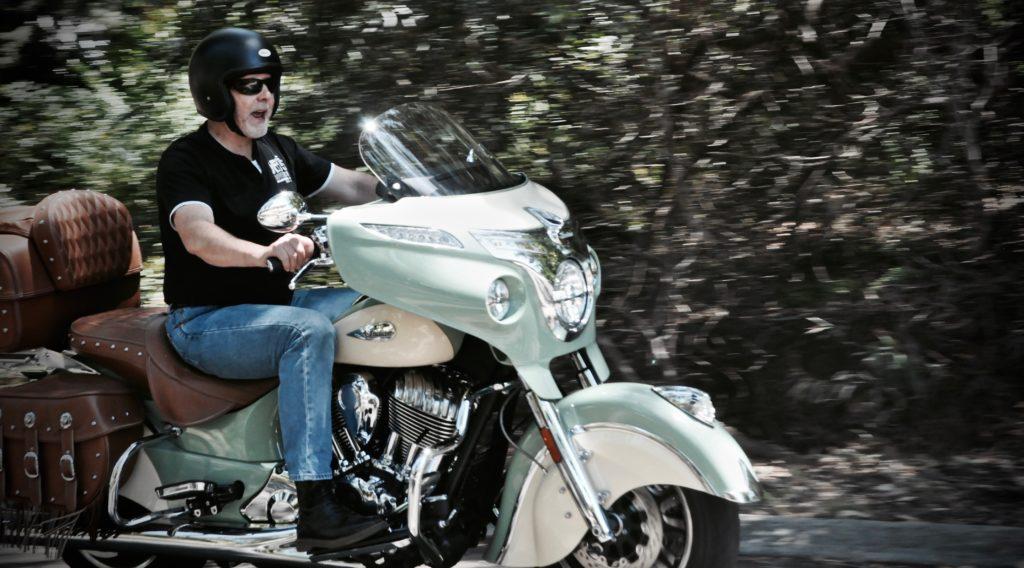
To say it has presence is like saying Donald Trump has self-confidence. Yes, lots. Whether wobbling across the carpark, cruising in the suburbs, or full-volume John Denvering on the highway this is a mighty big chunk of metal. Yes, there are bigger motorcycles; but not many. It wouldn’t surprise me if road trains pulled over when they saw it coming up behind them.
Dominated by a huge engine, lashings of beautifully painted metal and a Texan-cattle-ranch-stampede’s worth of leather, it looks like no other bike on the road. The leather-chrome-and-paint styling is distinctive and polarising. I had one bloke tell me it was simply the most beautiful bike he had ever seen in his life and then, three minutes later, another bloke tell me it was surely the most ugly bike that had ever been built.
But then, courageous styling is like that, isn’t it?
HOW DOES IT GO?
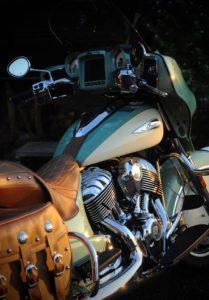 It goes like a freight train. That motor is as big as it looks — 111 cubic inches translates to 1,811 cubic centimetres, with two monster pistons stomping up and down the cylinders. It sounds and feels like an early V8 Falcon motor. It rumbles and shakes and growls and says ‘power’ more than ‘speed’. In contrast to a sports bike or a big Japanese multi, you feel like you’re being pulled along by the Indian, rather than pushed by a Honda.
It goes like a freight train. That motor is as big as it looks — 111 cubic inches translates to 1,811 cubic centimetres, with two monster pistons stomping up and down the cylinders. It sounds and feels like an early V8 Falcon motor. It rumbles and shakes and growls and says ‘power’ more than ‘speed’. In contrast to a sports bike or a big Japanese multi, you feel like you’re being pulled along by the Indian, rather than pushed by a Honda.
The best engine range is, surprisingly, quite narrow. You live between 1500 and 3500 rpm, with the most fierce urge about half way between those figures. With six gears to choose from, the motor is perfectly happy dawdling in traffic or loping along the highway, somewhere north of the open road speed limit.
While the motor has buckets of old-world charm, it’s held up by buckets of new-world tech — so it behaves itself impeccably. Fuelling was spot on, and it started and idled faultlessly.
It really is a great engine.
HOW DOES IT SOUND?
 It sounds like a Harley. Sorry, but it does. And that’s fine by me. Indian offers various exhausts, so you can go louder if you like, but the standard issue sounds wonderful to me, from idle all the way to full roar. Love it.
It sounds like a Harley. Sorry, but it does. And that’s fine by me. Indian offers various exhausts, so you can go louder if you like, but the standard issue sounds wonderful to me, from idle all the way to full roar. Love it.
HOW DOES IT STOP?
I didn’t have the courage to do anything that could be described as an emergency stop. But I was impressed with the brakes, nonetheless. Engine braking is substantial, a fact you really notice as you roll into town and enter a lower speed zone — just back off the throttle and she slows down. Add some pressure to the brakes as well, and you pull up rapidly.
Riding the Nannup-Balingup Road was another interesting brake test. For the most part, it was a third gear brake-and-throttle exercise. Keeping in mind it was my first run on the road, the ground speed was pretty modest; but great fun. Thunder up to a corner, dab the foot brake, get a good sight on the corner and exit point, then crank up those Newtons to pull you through.
WHAT’S IT LIKE IN TRAFFIC?
You can probably forget lane-splitting (although I’m sure there are folks out there who’d give it a crack) and it does take a while to get accustomed to the size and weight of the beast at walking speed.
Pulling up to the lights is an exercise in timing. You want to come to a true stop and then put your left foot down, keeping your right foot on the car-style brake pedal for stability. I know it sounds easy, and you think you do that all the time, right? With some luggage on board and a wife on the back — keeping in mind you’re now dealing with near-on 500kg of weight — it does take a while to perfect the stop.
But you do perfect it. And once you get the hang of it, it’s a piece of cake.
And once you reach 10kmh the weight vanishes. Just point the bike where you want to go, keep aware of your width, and feel like king of the road.
WHAT ABOUT THE HIGHWAY?
The Indian Roadmaster is built for the highway — and it does it well.
Most big-engined bikes don’t feel right at 110, wanting to stretch their legs to find their sweet spot in the rev zone. Thing is, most full-size bikes these days find their sweet spot in top gear at about 130 or 140. And if your mount has any sporting tendencies, it feels like a racehorse on a tight rein at the legal speed limit, right?
Not this bike.
The big engine feels and sounds just right at 110. It can go faster of course, quite a lot faster if you like, but at 110 you feel relaxed and comfortable. To overtake, there’s no need to bother your left hand or your leg foot. You just twist the grip and go. Rapidly, too.
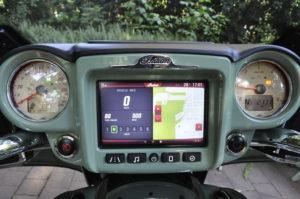
The big, wide fairing has an electric windshield — yep, an electric up-and-down window just like in the Jeep. Like all of the Roadmaster’s electronic do-dads you start by learning how to use it, then you get accustomed to it, then you get to like it, then you begrudgingly wish your bike had it too. I found myself fiddling with the windshield quite a bit, mostly keeping my eye-line fractionally above the top of the glass. That meant having the screen down low in town when my focal point tended to be twenty or thirty metres ahead, but up high when I was on the highway with my focal point way down the road.
When I wanted to go fast, I dropped the screen by an inch or two and squatted down in the seat (the word ‘crouch’ doesn’t fit) and looked through the screen rather than over it. The lower profile improved the aerodynamics, minimised road noise and felt more stable.
That big windshield enabled me to ride the highway with an open-face helmet, no problem at all. The screen kept bugs at bay, and I was able to talk to my wife and sing to my heart’s content. Go on, laugh .. I don’t care. It was great fun.
The stereo really was a surprise. In these days of in-helmet speakers I thought fairing-mounted speakers were a bit old-fashioned. But I’ve changed my mind. For one thing, the audio quality was surprisingly good. I mean, you are in the great outdoors so the acoustics aren’t real flash, and the speakers are competing with a freight-train load of engine noise and more than a bit of wind noise, so you can’t expect Perth Concert Hall clarity. But it really was rather good. 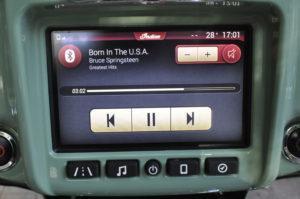
Volume was not a problem either. I never took the volume readout beyond four (out of ten) and that was plenty loud enough, even at 110kmh.
And I guess the speakers are safer than in-helmet speakers too. Those earbuds plugged into your earhole must block out noises you really need to hear — like horns and approaching trucks — but the open-air speakers don’t.
The stereo cooperated well with the well-spoken lady who lives inside the GPS unit. When she interrupted ‘Leaving On A Jet Plane‘ to tell me I would need to turn left in 800 metres, she did it with the calming authority of an airline hostess.
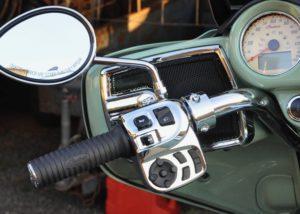
IS IT COMFORTABLE?
Yes. Very. And my pillion was delighted (read her report down the bottom).
I was delighted too, at least for the first hour or so. I was happy for the second hour. But I was looking for an excuse to stop after three hours. So, yes, I did get a sore bum and to be honest I was hoping I wouldn’t. But it’s still the most comfortable bike I’ve ever ridden so, hey, that’s got to be good. And to be fair, I’m not a frequent long-distance rider so maybe my butt is not tourer-friendly.
Apart from the seat itself, the seating position is great, wind noise and buffeting is low and did I mention the stereo? That’s right, yes I did. It has its own radio but it paired to my iPhone easy as pie so I enjoyed my own playlist most of the time.
The weather was glorious so we didn’t get to enjoy the heated seats or heated grips, but we did get to enjoy (?) the engine warmth. Day one temperature was low-to-mid 30s, probably even warmer on the road, and we both noticed the heat from the right side of the motor enough to call it ‘too much’. Day two and day three were two or three degrees cooler, and both of us were completely comfortable. What does it all mean? It means the right-side engine heat would be welcome on a cold day, unwelcome on a hot day, and probably irrelevant the rest of the time.
WHAT ELSE? 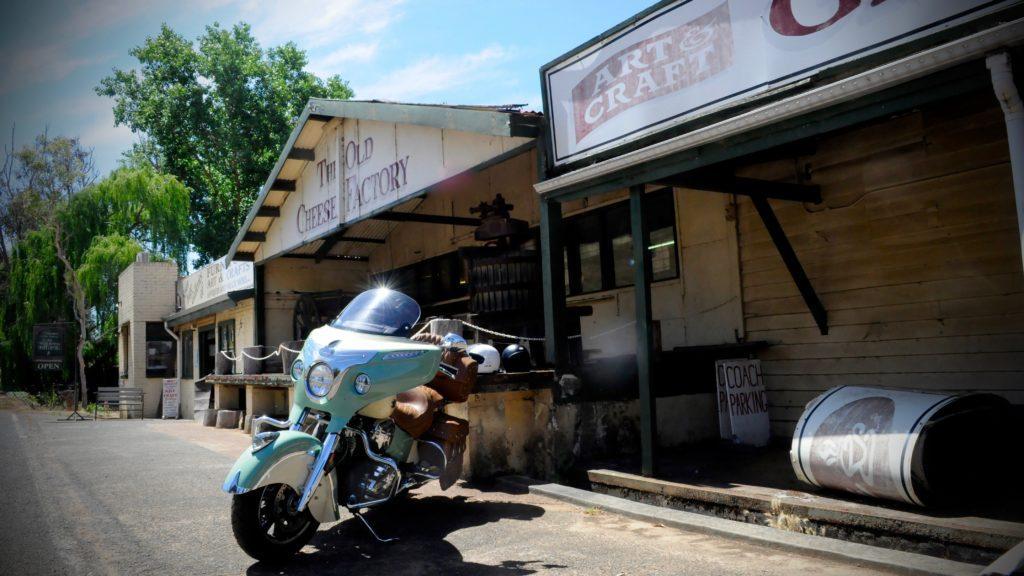
The bike is beautifully made. The paintwork, the leatherwork, the chrome — all of it is a class act.
Not surprisingly, the bike pulled a crowd just about everywhere it went.
The mirrors were great, the big floorboards (height-adjustable for the pillion, incidentally) were marvellous, the cruise control was easy to use, and the 7-inch touch-screen was informative and easy and fun to use.
The top box is bigger than it looks — it will swallow two helmets if it’s otherwise empty — while the side panniers are actually a bit smaller than they look. But we didn’t wish for more carrying capacity on our three-day jaunt. (If you want more storage and less leather, the Classic’s twin sister Roadmaster will make you smile.)
WHAT DO WE REALLY THINK?
The Indian Roadmaster Classic is a beautifully made open road tourer.
It’s a fascinating blend of modern technology and old-school styling.
If the open road beckons and the budget and your styling taste are a match, take one for a ride. (The people at Victory & Indian Motorcycle on Albany Highway in Cannington are surprisingly willing to let you take one of the big Indians for a long test ride — including overnight loans. They might even give you a full tank of petrol and raid the kitty to help pay for a night’s accommodation out of town. Tell them we sent you.)
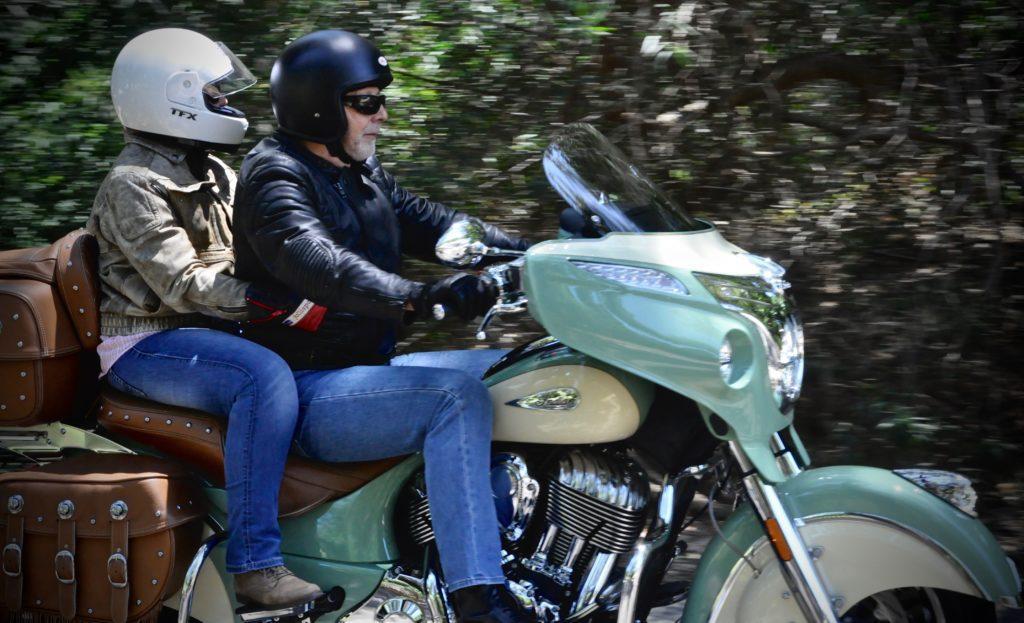
 THE PILLION REPORT
THE PILLION REPORT
Ah yes — I remember Very Large Motorcycles.
My last VLM ride was on the back of the Harley Electra Glide that Peter referred to earlier. It was so comfortable it was like sitting in the back seat of a car, wearing a bike helmet.
For a short blast like that one on the big Harley, I found myself asking, well, what’s the point? We might as well take the Jeep.
But our three-day run down south was a different proposition to a quick blast out to the Parkerville Tavern.
And for extended time in the saddle, the Indian was very impressive.
First and foremost, it looked after my rear end. Even when I climbed off the bike when we got back to Perth, I did not have a sore butt. Hallelujah!
The Indian’s leather seat was marvellous. It’s generous in every dimension — long, wide and deep — to such an extent that sore bum syndrome was non-existant.
But there was more to the comfort than just the seat. The sitting position, with the top box backrest behind me and my legs bent at a lounge room chair angle, was just right. The fairing minimised buffeting from the wind. I still knew I was on a bike, but it was all very civilised.
Climbing on and off the bike was easier than any other bike I have ever pillioned. The footboard gave me good initial purchase, then the long seat meant I could swing my leg over without whacking Peter in the ribs with my left ankle. Wonderful.
Complaints? Well, when you find yourself very comfortable you start to wish you were extremely comfortable: so some armrests would have been nice. Also Peter had his own stereo speakers and, if I must listen to John Bloody Denver, I would like a pair of speakers up the back, thanks.
Peter’s already mentioned the heat from the engine, but that’s about the end of the grumble list.
For short rides around town or a quick blast in the hills I’d still rather be on the back of something a bit more sporty and engaging, but for a long trip or if I really did have to cross the continent on the back of a bike, I’d want to be on the back of a VLM — and an Indian Roadmaster would definitely be on my short list.
SPECIFICATIONS
2017 INDIAN ROADMASTER CLASSIC
ENGINE
DRIVETRAIN
PERFORMANCE
SUSPENSION
CHASSIS
DIMENSIONS
STANDARD EQUIPMENT
ELECTRICAL
Lights
Gauges
Ride Command™
ALSO SEE:
Indian Chief Dark Horse – shoulders back, feet forward and hang on for a blast from the past
A short blast on an Electra Glide.

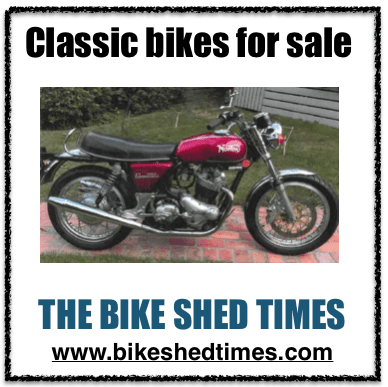
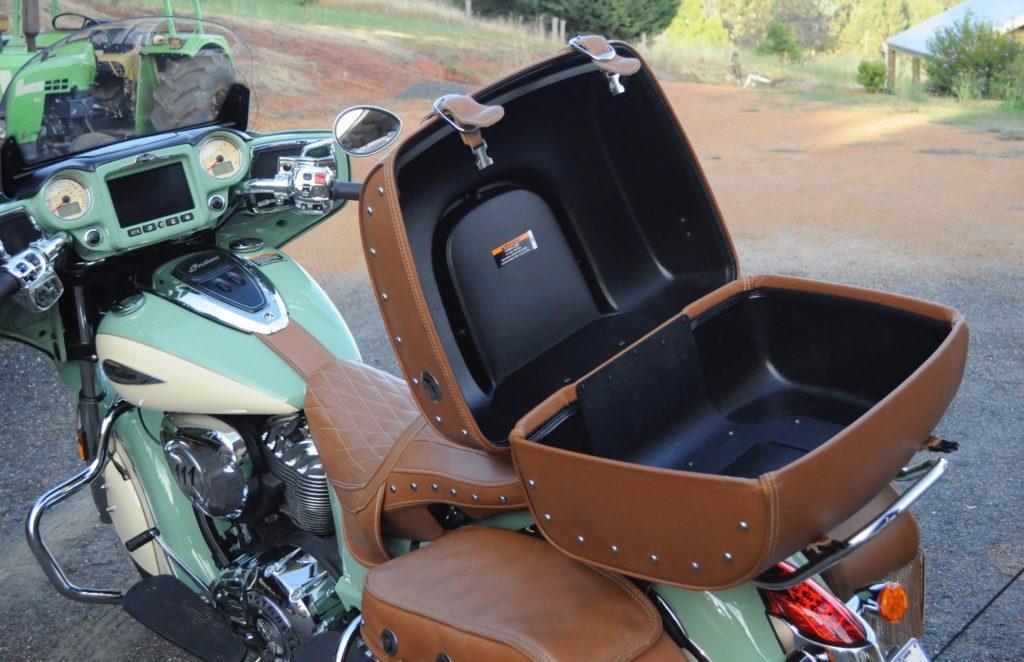
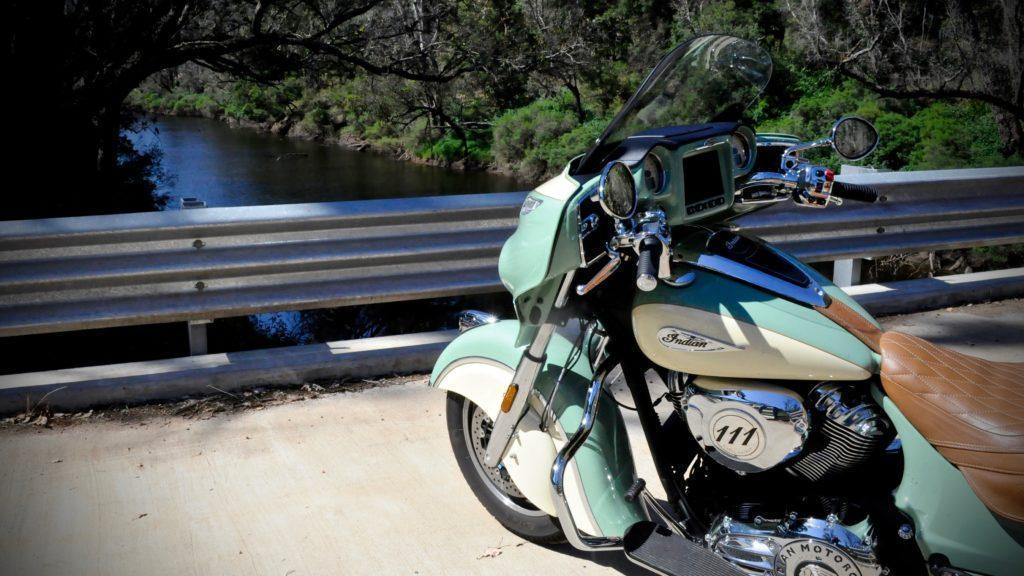

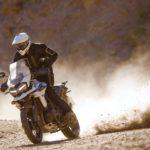

Well done Peter, great job. Now do you have any loose change? Say $37,000?
Nice report. Occasional sightings of behemoths such as these always has me wondering how they perform, and you answered that well. Loved the line… “the Transformer that ate Daniel Boone.” Of course the leather would be Longhorn Steer, and maybe you should have been listening to ZZ Top, but for a few moments I imagined myself riding one. And then dived into the cold pool just to perish those thoughts.